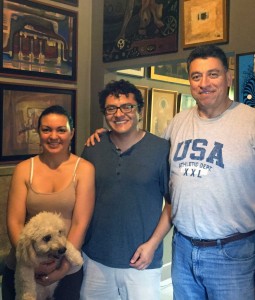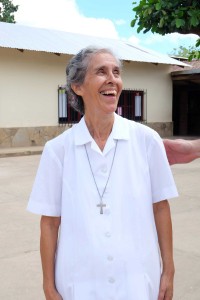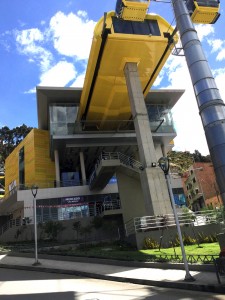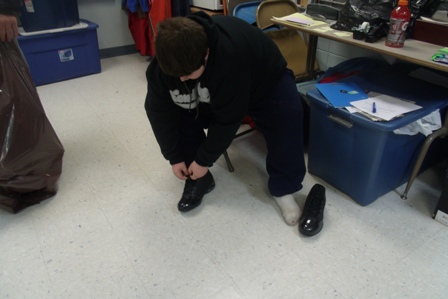Roberto Andrade and his wife, Verónica, are waiting for us when we step off the plane in hot, humid Santa Cruz. Roberto is an artist and an architect now, but he was once a little boy with enormous potential and struggling parents who worried about his future. They saw the talent and creativity in their son and knew that a quality education would help him develop into a happy, healthy adult.
“Because the happiest people in life aren’t the ones who have everything; the happiest people are those who share everything.”
– Roberto Andrade
It took years of patient waiting, but a sponsor finally stepped forward, and the 8-year old was enrolled at Escuela Cristiana. His art skills blossomed, nurtured by a supportive community, and he discovered his interest in architecture.
school architect rises from poverty
Roberto lives and works in Santa Cruz, following his three passions: art, architecture, and helping children in need. His architectural skills were employed in the expansion of the Montero School in Okinawa, a rural community a few hours out of Santa Cruz. But he is not only a talented artist and architect; he is also a humanitarian who donates his art to raise funds for impoverished children.

Luis with Roberto and his wife
He lived most of his life in Sucre, one of the capitals of Bolivia, where he grew up and attended college. The trip here to Santa Cruz, over 500 km of rough roads, would have once been impossible for his family, but art shows and exhibitions have brought the successful artist to New York City and further.
We’re here to see the inauguration of the school expansion, but this site visit is also a sort of reunion. I first met Roberto in Richmond, where he stopped en route to an art show in New York, and Luis met him on a trip to Bolivia when he was 14 and still in child sponsorship. After graduation, Roberto stayed in touch with Luis and was brought on to work on the school expansion program with Sister Geraldina, our coordinator near Montero.
More than just a school: It’s a window to the future
Before the expansion, this school was heavily overcrowded and poorly ventilated. La Paz is a beautiful colonial city above the clouds, and Santa Cruz a populous modern city with chain stores familiar to any American. But here in the countryside near Montero, people live in lean-tos and one-room huts with thatched roofs, and poverty is as staggering as the heat.
The poverty may be greater, but the parents aren’t different from those we’ve met in La Paz. They hold the same hopes Roberto’s parents did – for education to empower and elevate their children into stable adulthood. The school is more than just a means to an end: it’s a powerful symbol of a future. Before the expansion, and despite substandard conditions including poor ventilation and no sewage system, this symbol drew more than 1,000 children from all over the region, stretching it far past capacity.
Before the renovation, over 1,000 children packed into the dilapidated school — with bad ventilation and no sewer system.
Sister Geraldina: a 75-year-old volunteer leads the charge

Our volunteer coordinator Sister Geraldina
Our volunteer coordinator, Sister Geraldina, runs the school. She has devoted her life to helping children, since entering a religious order as a young woman in her native Chile. After 25 years of service there, she came to Bolivia, where she’s worked for the last 31 years.
She starts her mornings with a modest breakfast and immediately gets to work, involved with the children throughout the entire school day. In spare moments, she organizes parents and community events and spends her afternoons scheduling the other sisters and helping with their work.
If that all wasn’t enough, she also planned and oversaw every aspect of the expansion, upgrading this school from a collection of run-down buildings to a modern, well-ventilated facility with classroom space for the hundreds of students who attend. She’s already working on a second and third proposal, and she uses our visit to show us the improvements still necessary to accommodate more children in conditions conducive to learning.
Sister Geraldina is warm, but very serious, and never slows down as she coordinates the inauguration. Her energy belies her age. At 75, she worked side-by-side with the much younger Roberto to oversee the construction. In just a year, the duo and their construction team built five new slab-and-beam classrooms, restrooms, and a modern sewage system, with funds raised in tandem by our child sponsorship network and Sister Geraldina through the local community.
The school: new beginnings for the future
More than 600 people from the local communities attended the inauguration. The event is kicked off with performances of traditional dances by joyous, happy children in the gym. After the event, families of the 80 children in sponsorship meet with Luis to discuss their community and the children’s needs.
The celebration continues the next day when the children attend school for the first time in their new classrooms. In these new rooms, these children seem like children everywhere, laughing at silly jokes, goofing around, and working on class assignments.
growing up and growing into service
Education provides a lifeline for these children. Despite crushing poverty and a childhood marked by need, Roberto has become a successful artist and architect, dedicated to improving the lives of children who are growing up in even more impoverished locales. Some of these children will move on from the dusty towns and rough, dirt roads of their past, and others will stay, engineering the conditions and infrastructure to elevate the next generation, the same way their parents and Sister Geraldina did; the same way that Roberto did.
I look at the children of Montero the same way I imagine that Roberto’s parents looked at him, and I see bright futures, full of potential, compassion, and acts of kindness and charity. Which ones will become architects? Teachers? Doctors? How will they give back to the next generation?
***
HOW DO I SPONSOR A CHILD IN BOLIVIA?
You can sponsor a child in Bolivia in one of three ways – call our office and speak with one of our sponsorship specialists at 1-800-538-5381, email us at sponsorship@children-inc.org, or go online to our donation portal, create an account, and search for a child in Bolivia that is available for sponsorship.


 Not every place is accessible by bridge though, and automobile traffic is congested and slow. Many residents still walk because they can’t afford a car or to avoid congestion. The city introduced a cable car system in 2014 to address their needs. This system, Mi Teleférico, connects La Paz with its poorer neighbor, El Alto, the highest major city in the world, built another 1,500 feet up the mountains.
Not every place is accessible by bridge though, and automobile traffic is congested and slow. Many residents still walk because they can’t afford a car or to avoid congestion. The city introduced a cable car system in 2014 to address their needs. This system, Mi Teleférico, connects La Paz with its poorer neighbor, El Alto, the highest major city in the world, built another 1,500 feet up the mountains.
